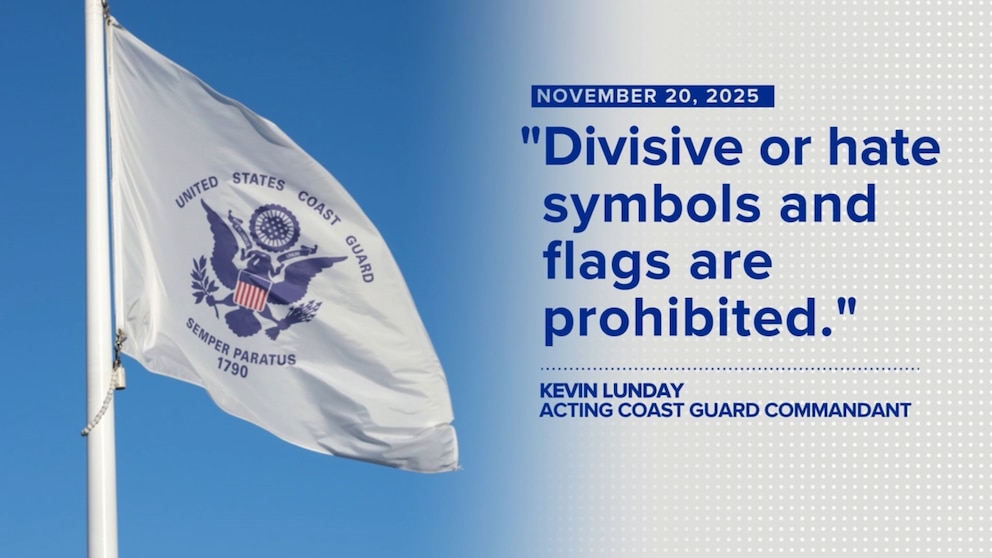Confusion and Outrage Over Coast Guard’s Symbol Policy
The U.S. Coast Guard found itself at the center of a firestorm this week after reports surfaced suggesting the branch had quietly removed
swastikas, nooses, and other extremist imagery from its official list of hate symbols. The controversy erupted when a
Washington Post article highlighted changes in the Coast Guard’s policy language, sparking widespread concern that these symbols would no longer be explicitly banned.
Within hours, backlash from lawmakers, advocacy groups, and the public forced the Coast Guard to clarify—and ultimately double down on—its stance. Officials released a new memorandum reaffirming that
swastikas, nooses, and similar symbols remain strictly prohibited for Coast Guard personnel, emphasizing that any display, use, or promotion of such imagery will be “thoroughly investigated and severely punished”.
Policy Changes and Rapid Reversal
The confusion stemmed from a shift in wording between two key documents. A February 2023 policy stated that displaying controversial symbols like swastikas “would constitute a potential hate incident.” The November 2025 update removed the explicit “hate crime” language, instead categorizing these symbols as “potentially divisive” and leaving enforcement up to commanders’ discretion.
This subtle change ignited fears that the Coast Guard was softening its approach. Critics argued that reclassifying hate symbols as merely “divisive” could undermine morale and discipline, and send the wrong message about the branch’s commitment to inclusivity.
But after the uproar, the Coast Guard quickly reverted to its previous, stricter language. The Nov. 20 memorandum clarified that “divisive or hate symbols and flags are prohibited,” and that commanders must act to remove any imagery that threatens unit cohesion or morale.
Political Fallout and Public Reaction
The controversy drew sharp responses from both sides of the aisle. Coast Guard officials and Department of Homeland Security leaders denounced the initial reporting as “categorically false,” insisting that the branch had never intended to allow extremist symbols. Rep. Joe Courtney praised the Coast Guard’s reversal, calling it a “welcome shift” that reaffirms the branch’s values.
Admiral Kevin Lunday, acting commandant, stated unequivocally: “Symbols such as swastikas, nooses and other extremist or racist imagery violate our core values and are treated with the seriousness they warrant under current policy”.
What This Means for the Coast Guard
-
Swastikas, nooses, Confederate flags, and similar imagery remain banned for Coast Guard personnel.
- Any display or use of these symbols will be investigated and punished.
- The Coast Guard’s policy now aligns closely with broader military standards on hate symbols.
- The incident highlights the importance of clear, consistent language in military policy—and the power of public scrutiny to drive rapid change.
Future Implications
This episode serves as a cautionary tale for government agencies: even minor changes in policy wording can have major consequences. The Coast Guard’s swift reversal demonstrates a commitment to maintaining a safe and respectful workplace, but also exposes the challenges of navigating public perception in a polarized environment.
As the Coast Guard moves forward, officials say they remain “unwavering” in their commitment to core values—and will continue to prohibit any symbols that threaten morale, discipline, or inclusivity.
Sources
1. Coast Guard 'doubles down' on designating swastikas as hate ...
2. Fox News - Breaking News Updates | Latest News Headlines ...
3. Coast Guard reverses course, keeps swastikas and nooses on list of ...
4. Donald Trump | Fox News
5. Coast Guard will reclassify certain imagery as "hate symbols" after ...
6. Rep. Courtney praises Coast Guard reversal on hate symbol policy
